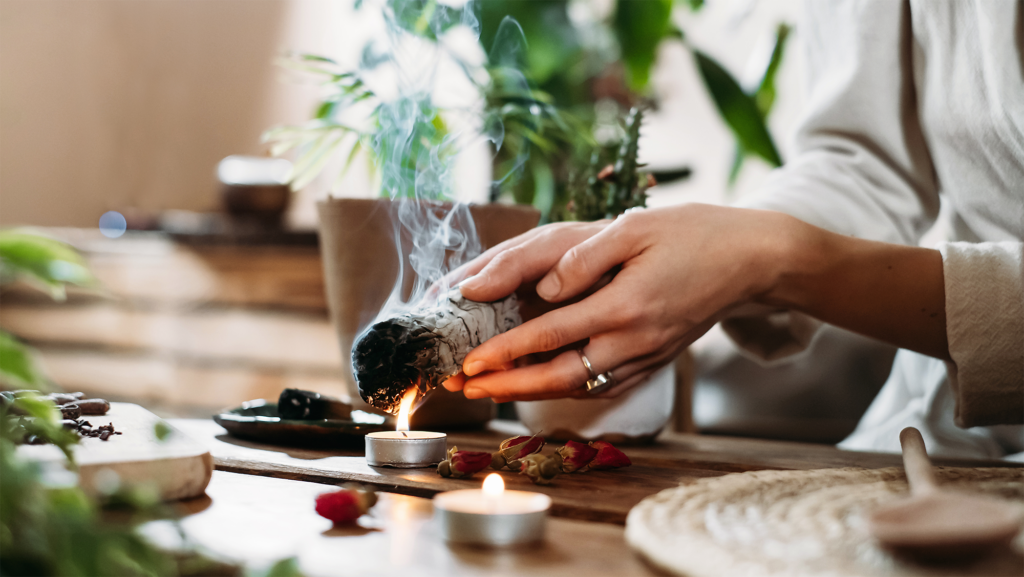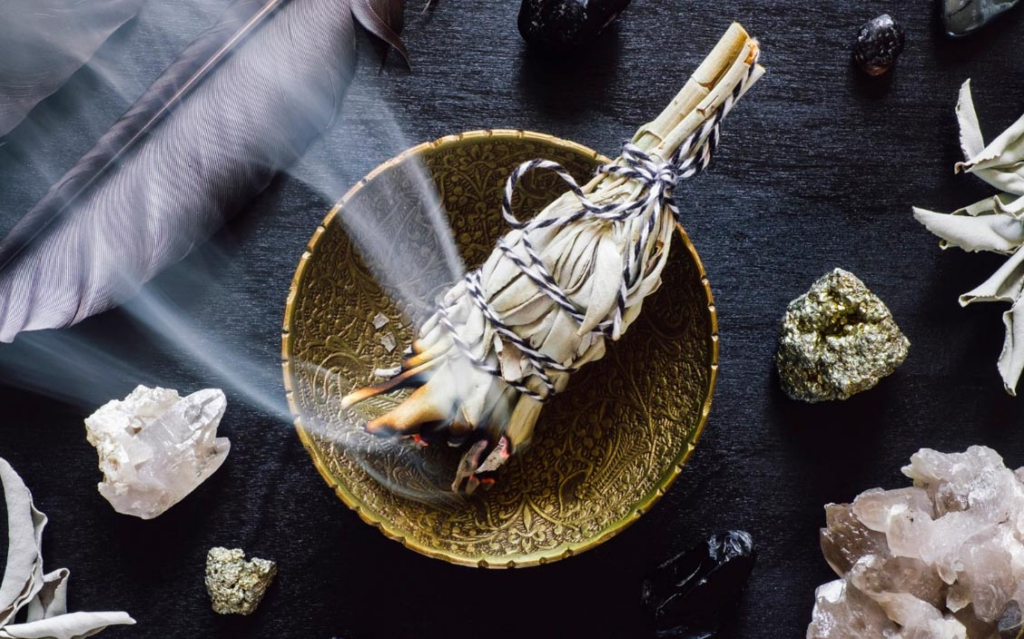Creating a space with positive, harmonious, and balanced energy is at the core of Feng Shui practice.
Among its techniques, smudging stands out as a powerful tool for cleansing your home and the surrounding environment.
Smudging involves burning plant material or sage to purify and cleanse your space, effectively clearing away any negative energies that may have accumulated.
But how to know if smudging has worked?
In this guide, we delve into the essence of smudging and provide insights into recognizing its effectiveness.
What is smudging, and how does it work?

Smudging is a traditional ceremony where sacred herbs like sage are burned to clear away negative vibes from a space.
Originating in different indigenous cultures, it’s believed to purify spirituality and promote healing.
When the herbs burn, their smoke is said to grab hold of bad energy and remove it, leaving behind a positive, refreshing atmosphere.
People often add prayers or special rituals to make it even more powerful. Essentially, smudging taps into nature’s power to cleanse and refresh both the physical and energetic qualities of a place.
Why is smudging at home so important?

Smudging at home holds significance because it nurtures a warm and balanced atmosphere.
Think about how daily life can sometimes leave behind a residue of tension or unease—whether it’s from a hectic schedule, disagreements, or just a lack of fresh air circulation.
Smudging steps in like a gentle breeze, clearing out those lingering negative vibes and making room for a fresh start.
It’s like hitting the reset button for your home’s energy, fostering a feeling of comfort and positivity.
And beyond that, it sets the stage for deeper practices like meditation or unwinding after a long day, creating a space where inner peace can flourish.
Ultimately, smudging adds a sprinkle of magic to our homes, contributing to a healthier, happier environment that nurtures both our physical and emotional well-being.
The history of smudging and how did it originate

The age-old tradition of smudging traces its origins back to diverse indigenous cultures across the globe, especially in regions like North America, Central America, and parts of Asia.
These communities have deeply valued the act of burning herbs for its spiritual significance, employing it for purification, healing, and ceremonial purposes.
Passed down through generations, smudging is not merely a ritual but a sacred connection to ancestral beliefs and customs.
In these indigenous societies, particular herbs like sage, cedar, sweetgrass, and lavender hold sacred importance and are employed in smudging rituals to cleanse and bless individuals, spaces, and objects.
The practice’s origins are ancient and rich, with each culture contributing its own distinct rituals and interpretations.
For instance, Native American tribes have cherished smudging for centuries, using it as a means to cleanse and purify both the physical and spiritual realms.
Meanwhile, in Asian cultures such as Hinduism, Buddhism, and Taoism, the burning of incense and herbs has been deeply interwoven into religious and spiritual rituals, symbolizing a profound connection to the divine and the natural world.
Steps to start smudging your home
To start smudging your home, follow these simple steps:
- Gather Your Supplies: Collect the necessary items for smudging, including a smudging bundle (typically sage, cedar, sweetgrass, or lavender), a heatproof bowl or abalone shell to catch ashes, and a lighter or matches.
- Set Your Intention: Before beginning, take a moment to set your intention for the smudging ceremony. Whether it’s to clear negative energy, invite positivity, or simply create a peaceful environment, clarity of intention enhances the effectiveness of the ritual.
- Open Windows and Doors: Open windows and doors in your home to allow any negative energy to escape as you smudge. This also encourages fresh air circulation.
- Light the Smudging Bundle: Using a lighter or matches, ignite the tip of your smudging bundle until it catches fire. Allow it to burn for a few moments, then gently blow out the flame, leaving a steady stream of smoke.
- Smudge Your Space: Starting at the entrance of your home, move clockwise around each room, waving the smudging bundle in a sweeping motion. Pay special attention to corners, doorways, and areas where energy may feel stagnant. Visualize the smoke carrying away any negative energy and purifying the space.
- Offer Prayers or Affirmations: While smudging, you can recite prayers, affirmations, or intentions that align with your purpose for the ceremony. This adds a personal touch and enhances the spiritual aspect of the ritual.
- Extinguish the Smudging Bundle: Once you’ve smudged your entire home, carefully extinguish the smudging bundle by pressing it into the heatproof bowl or shell until the smoke ceases.
- Close Windows and Doors: After smudging, close the windows and doors to seal in the positive energy and create a sense of sanctuary within your home.
- Dispose of Ashes: Dispose of the ashes from your smudging bundle respectfully, either by scattering them outside or burying them in the earth.
A reliable indicator of the effectiveness of smudging or saging is the absence of negative or undesirable energy in your home.
There is no fixed schedule for conducting smudging rituals; instead, rely on your intuition to determine when it is necessary.
Whenever you sense negative energies or feel burdened by stressors, trust your instincts to guide you in deciding when to perform smudging again.
Different types of Sages you can use for smudging

Choosing the right type of sage for smudging is a deeply personal decision, guided by individual preferences and intentions.
Each variety of sage carries its own unique qualities, offering a tailored experience for the smudger.
White Sage: Widely used for its ability to instill positive energy, white sage is the go-to choice for cleansing and purifying spaces, promoting clarity and renewal.
Blue Sage: Known for its calming properties, blue sage creates a serene and tranquil atmosphere, often associated with attracting wealth, prosperity, and facilitating healing.
Black Sage: Ideal for meditation practices and pre-bedtime rituals, black sage promotes deep relaxation and encourages vivid dreams and visions, facilitating a peaceful night’s sleep.
Lavender Sage: Combining the soothing qualities of lavender with the cleansing power of sage, lavender sage offers healing properties and is believed to possess antibacterial, antiseptic, antifungal, and anti-inflammatory properties.
Desert Sage: Renowned for its cleansing and healing properties, desert sage supports immune system health and aids in relieving headaches and anxiety, offering a sense of purification and rejuvenation.


